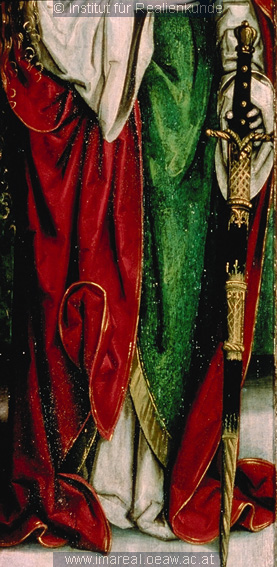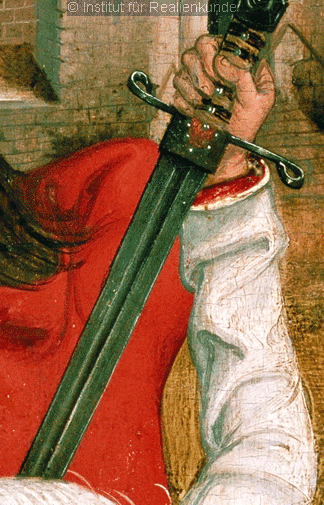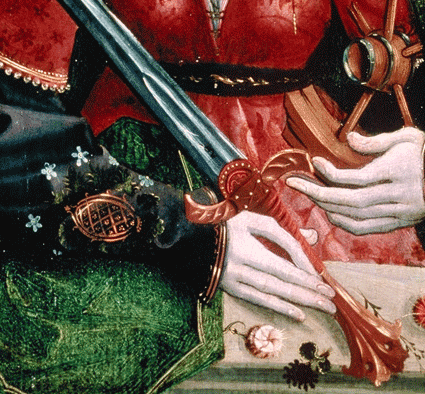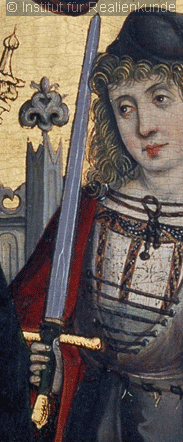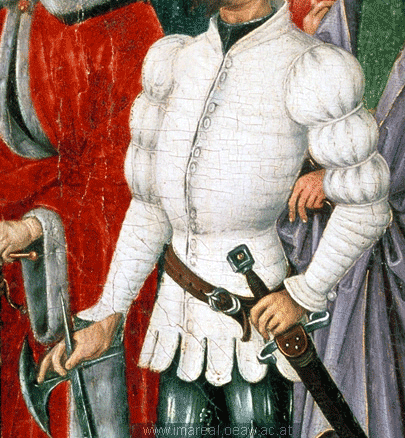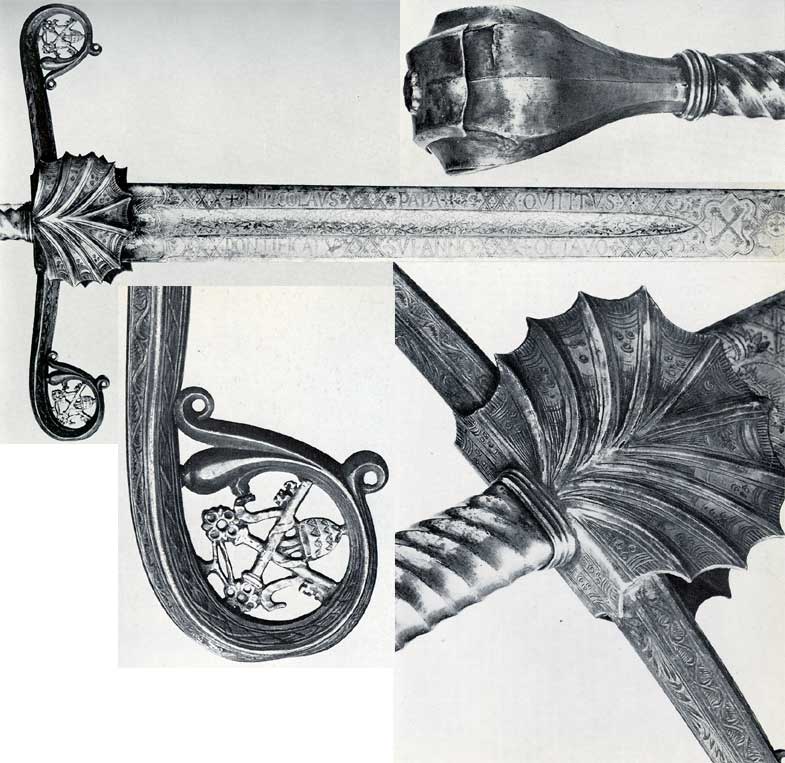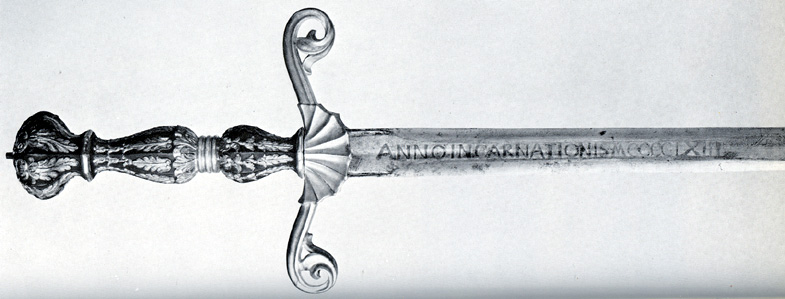I am looking for examples of engravings on late medieval swords. I've worked out the final design details with Peter Lyon for the sword I am getting made, but I would like to get it engraved.
I have the words already, but they don't fit neatly on the quillons. The sword will have a rainguard so the engraving can't just go all the way across. I'll sacrifice the engraving before I go without the rainguard (which will also be decorated with i.h.s on one side and either "maria" or d.g. on the other).
From what Peter has said engraving on the blades of swords of this period is rare to nonexistent because it predates acid etching but the blade steel was hard enough to make engraving the blades impractical. Aside from that I rather like the aesthetic of the unadorned blade.
The text I want to get engraved is:
| Quote: |
|
Ubi perexeris pergam |
| Quote: |
|
moratus fueris morabor |
One one each side of the sword with the sentence split between each arm of the cross. There won't really be space to get three words on each arm of the cross.
I would like to see other examples of this sort of engraving on sword furniture to get a feel for how best this should be laid out and divided up. The easiest way to get a feel for the size and style of the cross is that it will be of the style of the one on the Munich.
FYI the text is based on Ruth 1:16 in the vulgate latin version of the Old Testament. It was contracted down for me by a scholarly friend familiar with medieval latin and means "wherever you go I shall go" and "wherever you stay I shall stay". That passage formed the basis of our wedding vows when my wife and I got married :)
Any help would be greatly appreciated.
